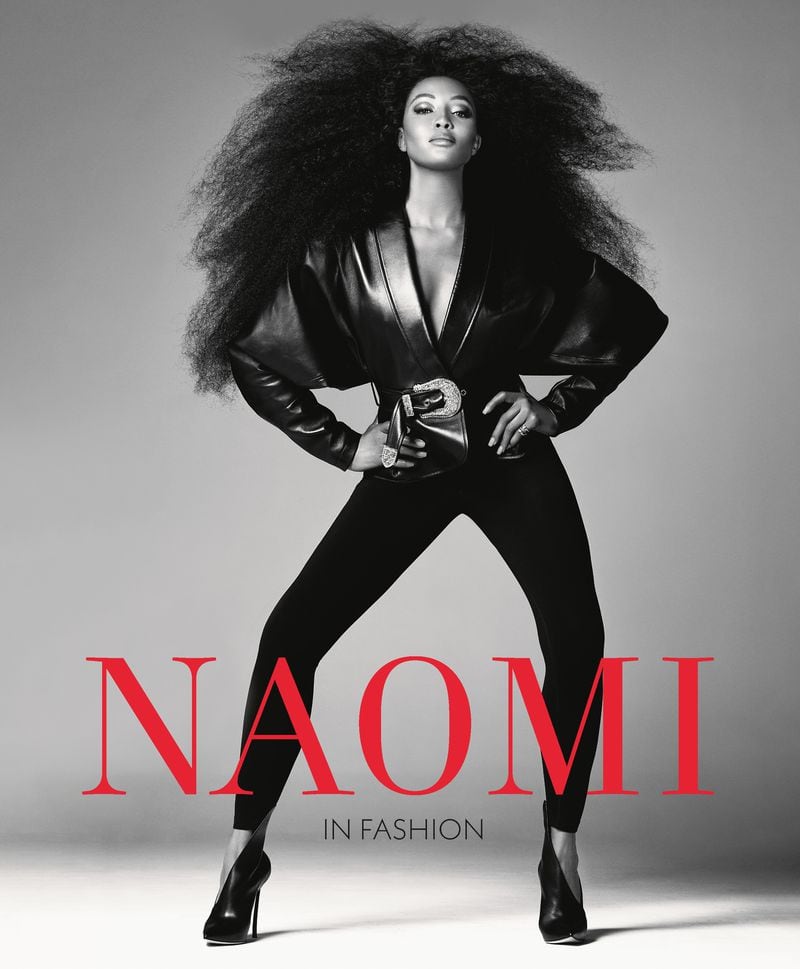There was a stretch in the 1990s when you couldn’t tune in to MTV, the 24-hour music video cable network, without seeing “Freedom! ‘90″ cycle through again and again. Global pop star George Michael’s hit song was brought to life on screen by lip-synching models. Whenever this video came on, my college roommates and I would push the furniture to the perimeter of the room, giving us the space to dance and lip-synch along with the lip-synchers.
Michael’s decision to cast models in the video, instead of appearing in it himself, would become an iconic moment in pop culture, one that would blend the worlds of fashion and music videos while bolstering the celebrity of five 20-something women. They couldn’t know it at the time, but they would be among the last of the so-called supermodels.
Integral to this group was Naomi Campbell. And her inclusion in the supermodel pantheon made me and many other young women believe that our brand of beauty was finally visible to the larger society.
To me, Campbell, a Black British woman of Jamaican ancestry, was more than a model. She was validation. Her appearance on magazine covers, on designer catwalks and in music videos was a signal that the world was changing. And she was helping to lead the charge.
This was likely more weight than Campbell wanted to carry and, in retrospect, my hopes were naive. This was decades before “representation matters” became the buzz phrase that it is today, but I, my college roommates and other Black people knew it mattered.
To underscore Campbell’s influence, her decades-long career is now the subject of a new exhibition that is opening later this month at London’s Victoria and Albert Museum. I won’t be seeing this exhibition in London, but fortunately publisher Rizzoli is releasing a companion book, “Naomi: In Fashion.”
Credit: Rizzoli New York
Credit: Rizzoli New York
I got early access to the book and thumbing through the pages was a trip back in time, back when magazines, with their photo spreads and glossy ads, used to magically transport us into high society in all its glamour.
One summer, when I was nearing my preteen years and had time on my hands, I wandered into the family den and snooped through the contents of the built-in wood cabinets. I ended up sorting through piles of Artforum magazines left behind by the previous homeowner. Sitting on the floor and flipping through the pages, I read stories that I barely understood. But the magazines would help drive my future appreciation for art, fashion and culture.
By the time I was a teen, I was reading W Magazine, Harper’s Bazaar, Town & Country and, of course, any edition of Vogue. From these pages, I first saw Campbell’s face staring back at me, a face so different from what had been the norm in these publications that I had no choice but to pay attention.
Campbell had been “discovered” at age 15 while hanging out after school in one of London’s shopping districts. Just before her 16th birthday, she graced the cover of the British version of Elle magazine.
She projected poise and strength. When my friends and I were young adults and felt our confidence waver, we knew we could summon our inner Naomi to carry us through an intimidating situation. She was just like us but also not at all like us. She looked like, literally, the girl who lived next door to our off-campus apartment, but Naomi had something else, something mythical, in our eyes.
We could only imagine what her life was really like, off the runway, or how she carried herself when not bedazzled. She was nearly perfect in our minds until the World Wide Web arrived and placed information at our fingertips. When that happened, her persona took a hit.
Campbell made headlines for an assault conviction that resulted in a week of community service work with the New York Sanitation Department. She revealed her addictions to alcohol and cocaine.
The retrospective of her work offers new insight into Campbell and her personality. She was very shy, she said, though her shyness was read as aloofness. On the pages of my magazines, she seemed bold, indomitable, in charge. But maybe her real strength was in surviving the industry.
It turns out, getting onto those pages required a mix of her own resolve and the support of allies like designer Yves Saint Laurent, who threatened to pull his advertising if French Vogue editors didn’t consider her for the magazine cover. Her fellow supermodels would refuse to walk in fashion shows until she was also hired.
Campbell knew she was not getting paid the same wages as the other models for the same jobs, but, according to her, she still kept working twice as hard. And when the supermodel era ended, she didn’t stop.
She’s now a mother of two young children and has said she is sticking around now because representation in modeling still hasn’t reached an appropriate level. She doesn’t want to abandon the younger adults who need her as a model for success.
Staying somewhat relevant in an industry that is notoriously fickle is certainly an accomplishment, as is continuing to push forward in a space that still holds exclusionary standards of beauty. When she hits an obstacle, she has said, she finds a way around it. That’s not the same as dismantling it, but we can’t expect a supermodel to do everything.
Or maybe, in Naomi Campbell, we have found someone who eventually can.
Read more on the Real Life blog (www.ajc.com/opinion/real-life-blog/) and find Nedra on Facebook (www.facebook.com/AJCRealLifeColumn) and Twitter (@nrhoneajc) or email her at [email protected].









